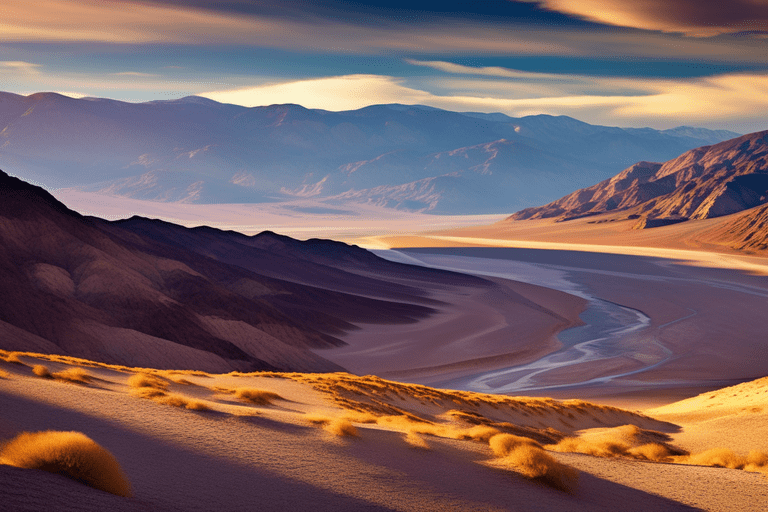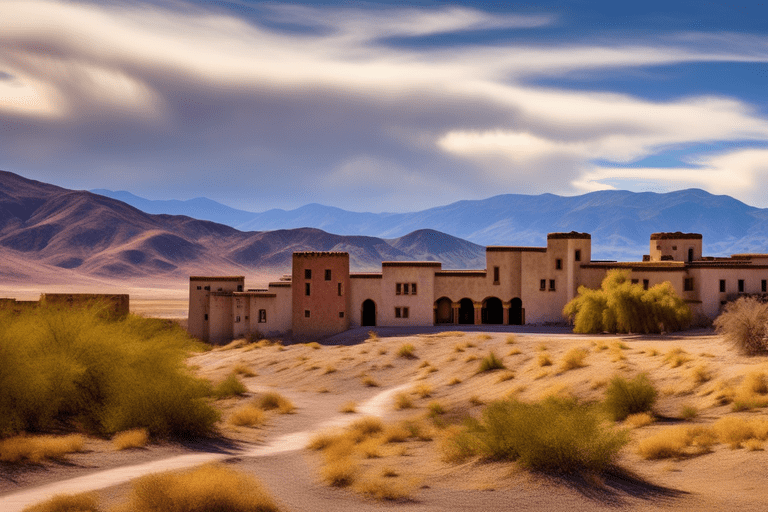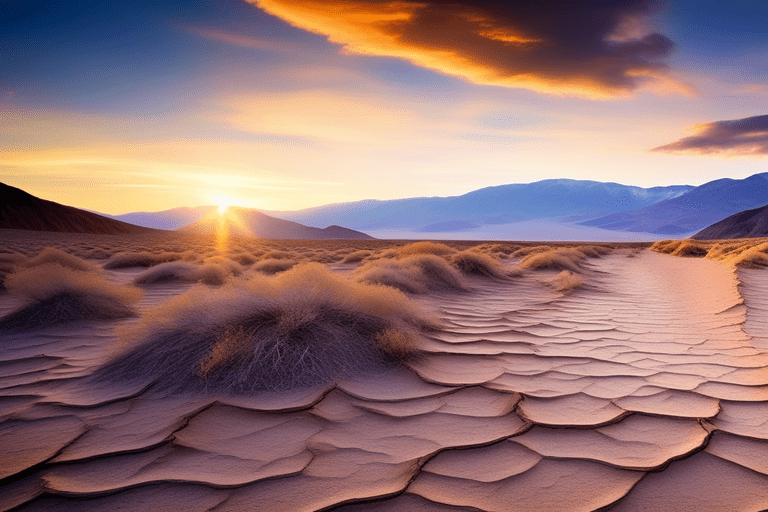Death Valley stands as an enigmatic testament to nature’s extremes. Established in 1994, this national park beckons adventurers with its unique allure. Amidst the sun-scorched landscapes, captivating tales unfold.

From its Indigenous roots to the rugged frontiersman era, Death Valley’s history spans centuries. Shaped by the forces of geology and human endeavor, this national park reveals a tapestry of resilience. Unearth the echoes of ancient cultures and pioneers, etched into the very fabric of this arid expanse.
With temperatures that can soar beyond 130°F, Death Valley is a hotbed of natural wonders. Surreal salt flats, towering dunes, and mysterious playas captivate the senses. As the lowest point in North America, Badwater Basin sits at 282 feet below sea level, an extraordinary landscape where extremes converge, inviting exploration.
Also Read this: 50 Fun Facts about California
Quick Fun Facts About Death Valley National Park
- Established in 1994, it’s the largest contiguous national park in the U.S.
- Recorded the highest Earth temperature at 134°F in 1913.
- Badwater Basin, 282 feet below sea level, marks the lowest point.
- Racetrack Playa showcases rocks leaving mysterious trails on the dry lake bed.
- Diverse landscapes range from sand dunes to vibrant canyons like the Artist’s Palette.
- Despite its name, the park hosts unique desert flora and fauna.
- Iconic spots include Zabriskie Point, Dante’s View and Ubehebe Crater.
- Historic sites like Harmony Borax Works reflect the area’s mining and pioneer history.
- Designated a Dark Sky Park, Death Valley offers breathtaking stargazing.
- Extreme conditions and unique landscapes make it a must-visit for adventurers and nature enthusiasts.
Also Read this: Fun Facts About Biscayne National Park
Embarking on the Journey

Death Valley stands as a testament to nature’s extremes. As the hottest and lowest national park in the United States, it captivates visitors with its unique landscapes and incredible tales. Let’s embark on a journey through 25 fascinating fun facts that illuminate the remarkable features of Death Valley.
Geological Wonders
Badwater Basin – The Lowest Point in North America

At 282 feet (86 meters) below sea level, Badwater Basin holds the distinction of being the lowest point in North America. The mesmerizing salt flats stretch for miles, creating an otherworldly landscape that leaves visitors in awe.
Devil’s Golf Course – A Surreal Salt Pan

Navigate the razor-sharp salt formations of Devil’s Golf Course, where the crystallized salt pinnacles create an alien-like environment. Despite its name, you won’t find any golfers here – just a stunning display of nature’s handiwork.
Ubehebe Crater – A Relic of Volcanic Activity
Ubehebe Crater, a massive volcanic crater, provides a glimpse into Death Valley’s tumultuous geological past. Created by a steam explosion, this colossal crater stands as a reminder of the region’s fiery origins.
Extreme Temperatures
Furnace Creek – The Hottest Place on Earth

Furnace Creek, aptly named, holds the record for the hottest temperature ever recorded on Earth: a scorching 134°F (56.7°C). The relentless heat makes Death Valley a living laboratory for scientists studying extreme climates.
Temperature Swings – From Hot to Cold
While Death Valley is renowned for its blistering heat, temperatures can swing dramatically. Winter nights can be surprisingly cold, with temperatures dropping to near freezing, offering a stark contrast to the daytime heat.
Unique Flora and Fauna

Sailing Stones – Mystical Movement
The Racetrack Playa in Death Valley is home to the mysterious sailing stones. These rocks seem to move across the flat surface on their own, leaving behind trails in the mud. The exact cause of their movement remains a scientific enigma.
Desert Gold – A Burst of Color

Contrary to its desolate appearance, Death Valley experiences wildflower superblooms, transforming the landscape into a sea of colors. The desert gold, a bright yellow bloom, carpets the valley floor during these rare and magical events.
Historical Significance
Harmony Borax Works – Mining the Valley’s Riches
In the late 1800s, Death Valley played a significant role in the mining industry. The Harmony Borax Works, an abandoned mining site, stands as a testament to the pioneers who sought riches in the harsh desert environment.
Scotty’s Castle – A Desert Oasis

Scotty’s Castle, an unexpected oasis in the desert, is a historical mansion with a captivating story. Built during the 1920s, it became a social hub for the wealthy and famous, showcasing the allure of Death Valley.
Protected Wilderness

Death Valley National Park – A Protected Treasure
Designated as a national park in 1994, Death Valley is a protected wilderness that spans over 3.4 million acres. Its diverse landscapes, from salt flats to sand dunes, make it a haven for nature enthusiasts and adventurers alike.
Dark Sky Designation – A Stargazer’s Paradise

Death Valley is recognized as a Gold-tier International Dark Sky Park, making it an ideal destination for stargazers. The absence of light pollution allows visitors to marvel at the brilliance of the night sky in all its glory.
FAQs
Answer: Death Valley National Park was established in 1994, becoming the largest national park in the contiguous United States.
Answer: In 1913, Death Valley recorded the highest air temperature ever recorded on Earth, reaching a scorching 134°F.
Answer: Badwater Basin, located within the park, marks the lowest point in North America at 282 feet below sea level.
Answer: Racetrack Playa is known for its sliding rocks that mysteriously move across the dry lake bed, leaving intriguing trails.
Answer: Contrary to its name, Death Valley teems with life, hosting unique desert flora and fauna adapted to extreme conditions.